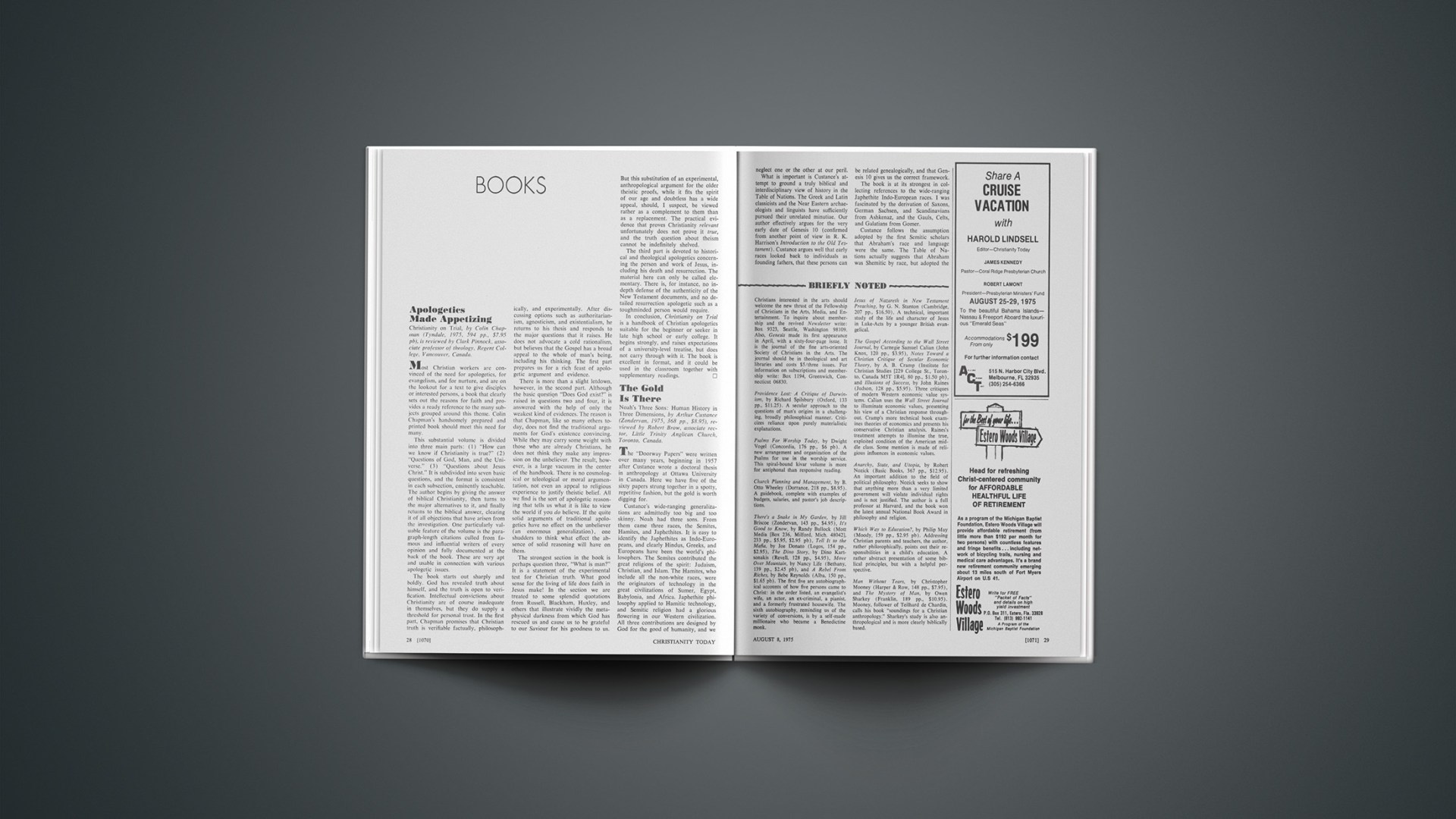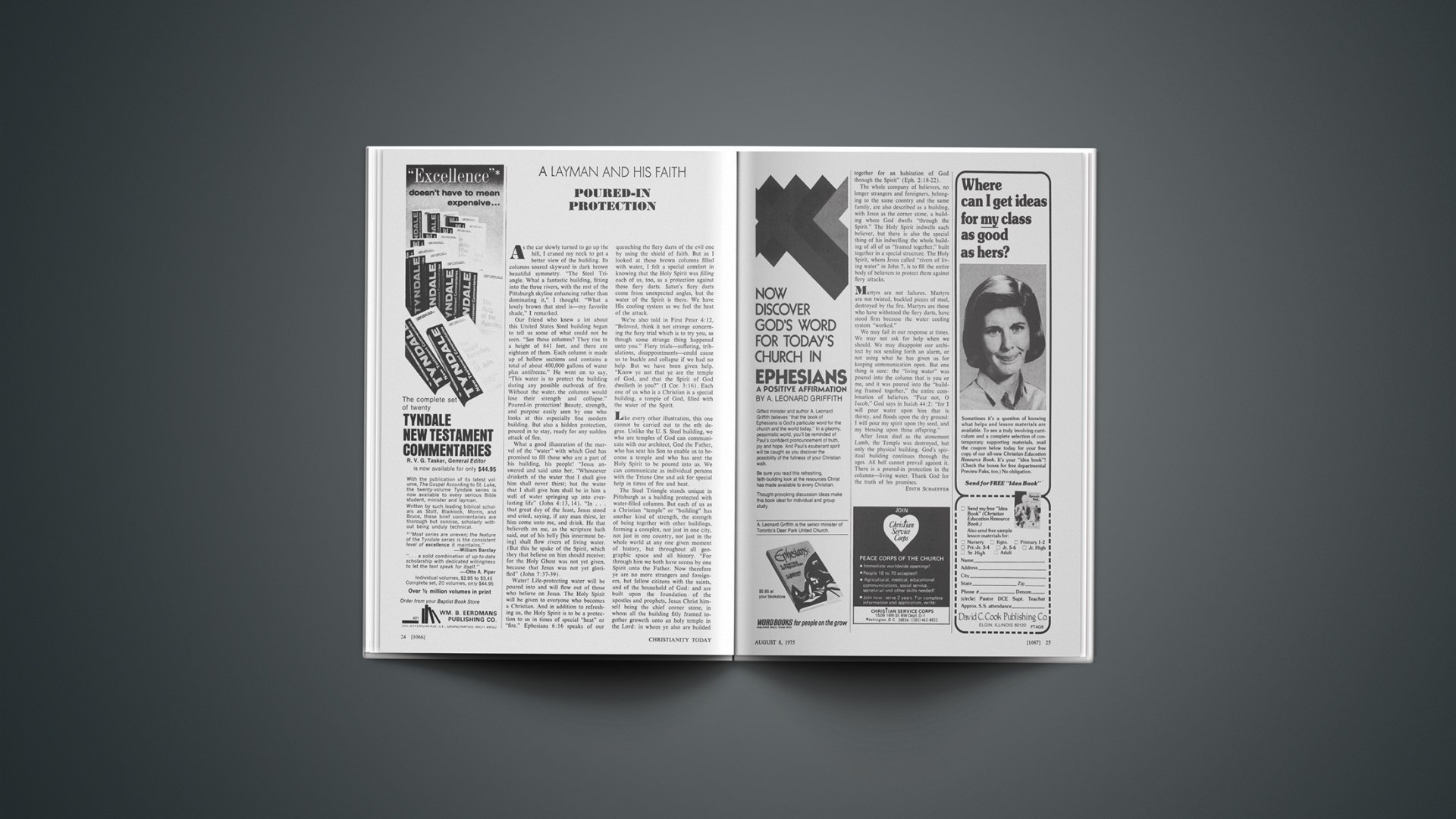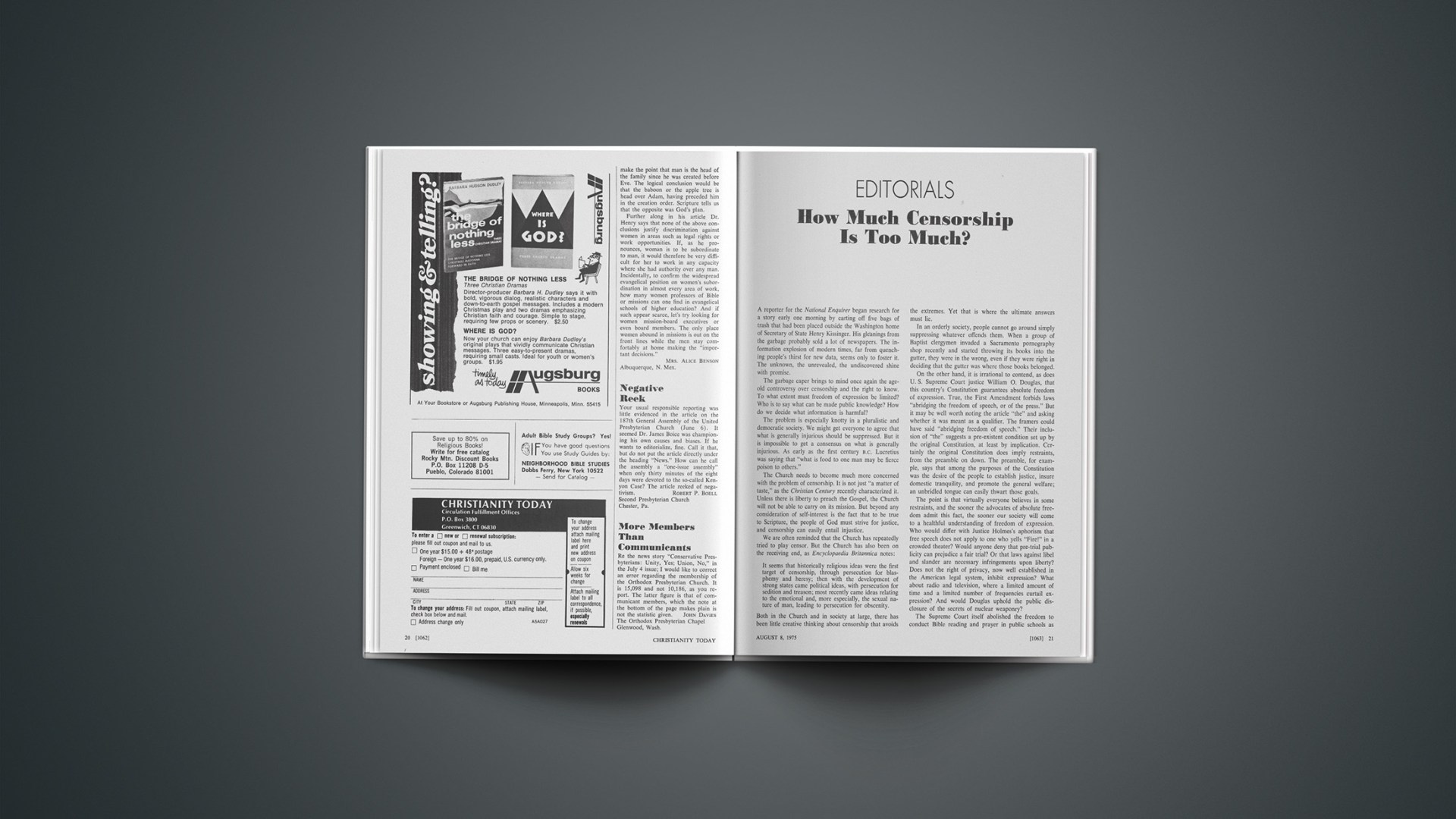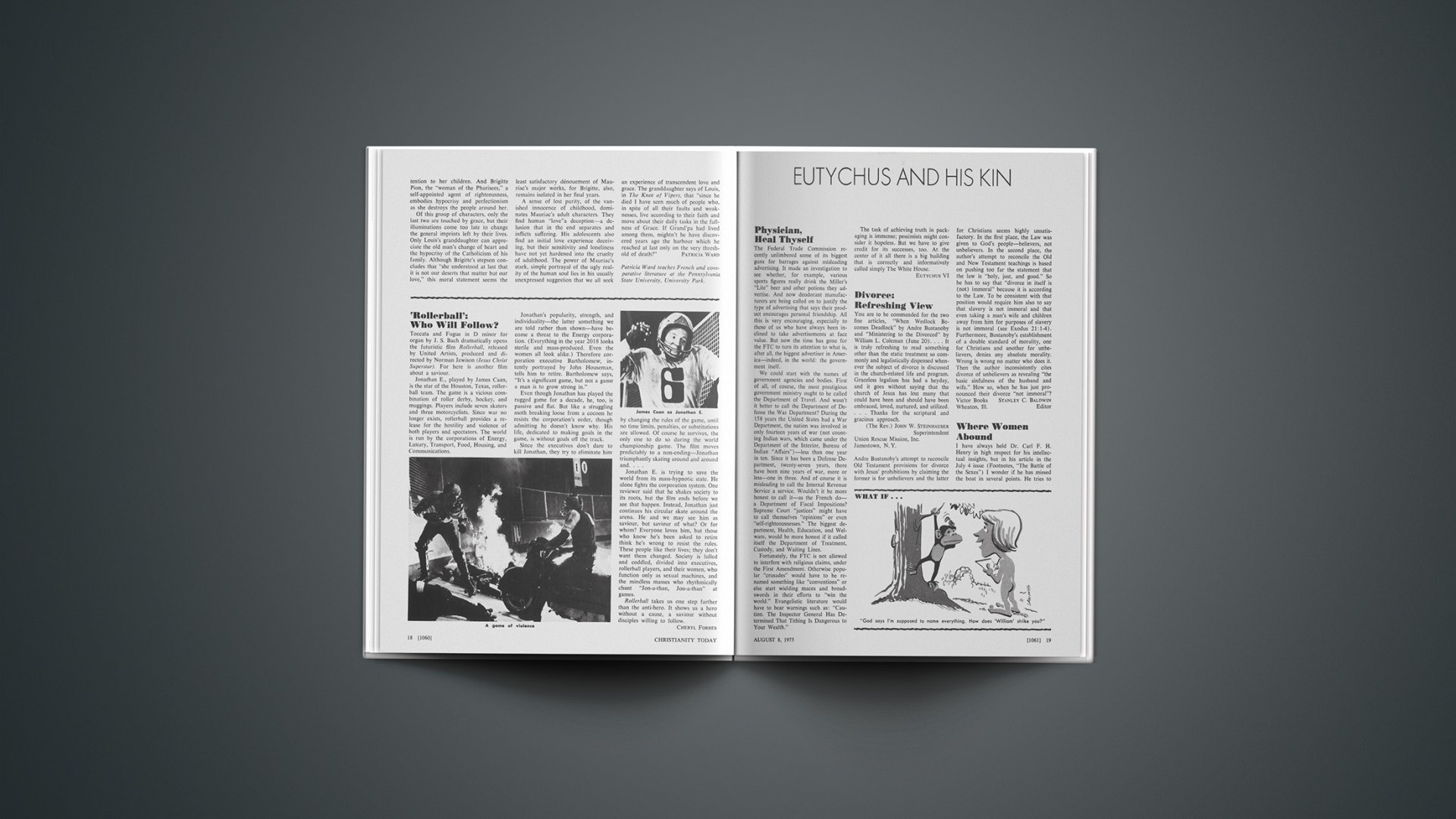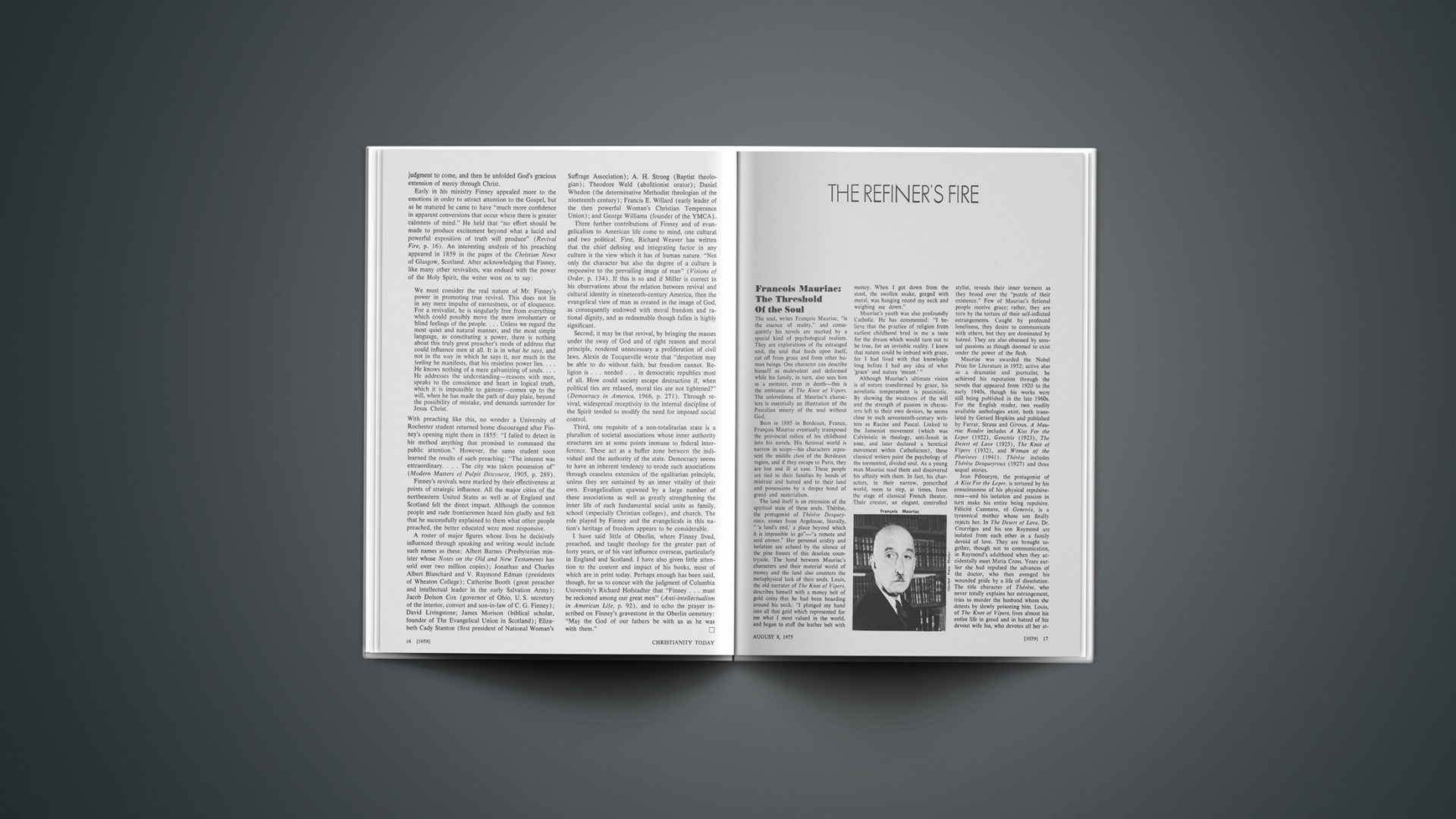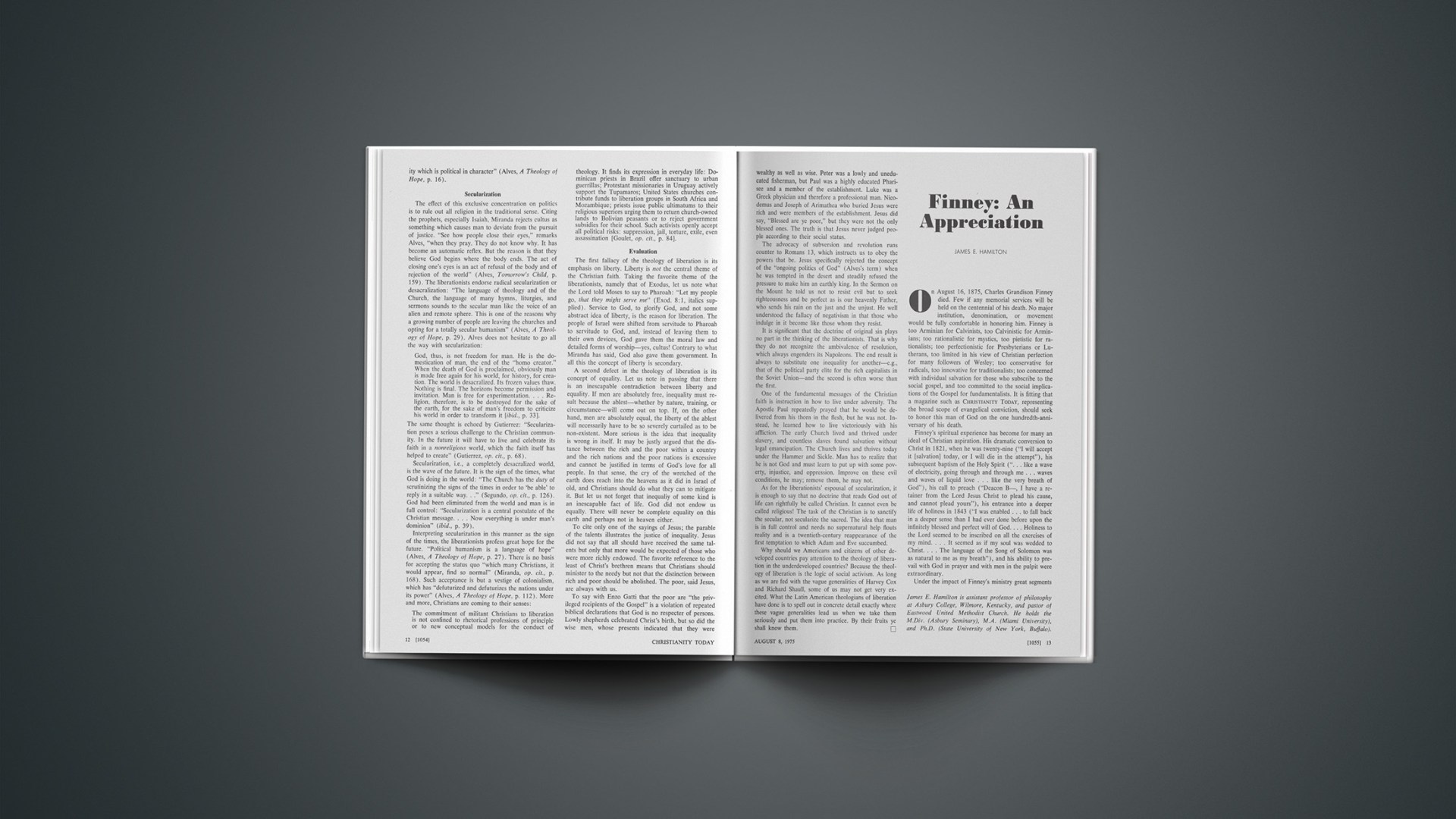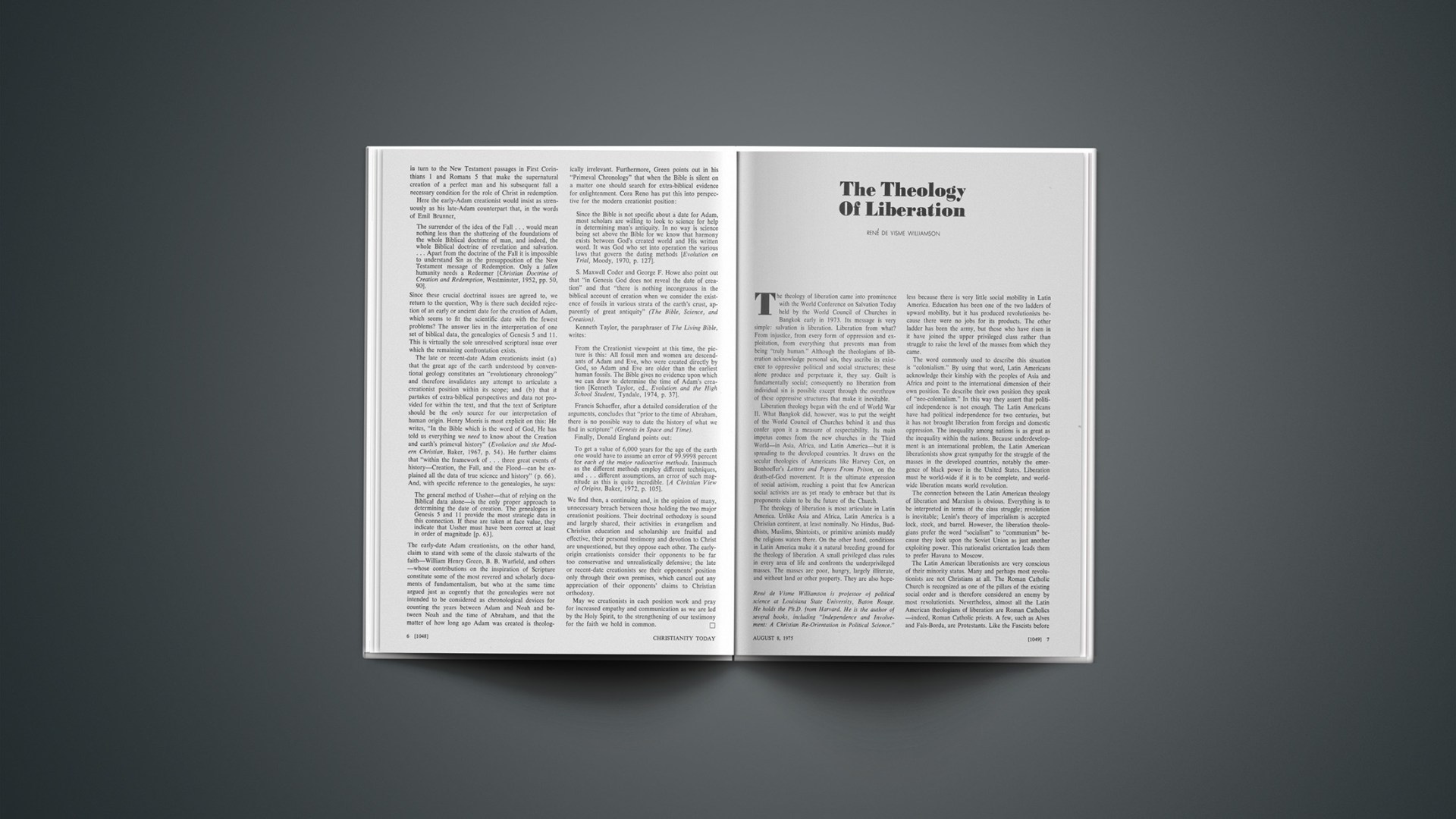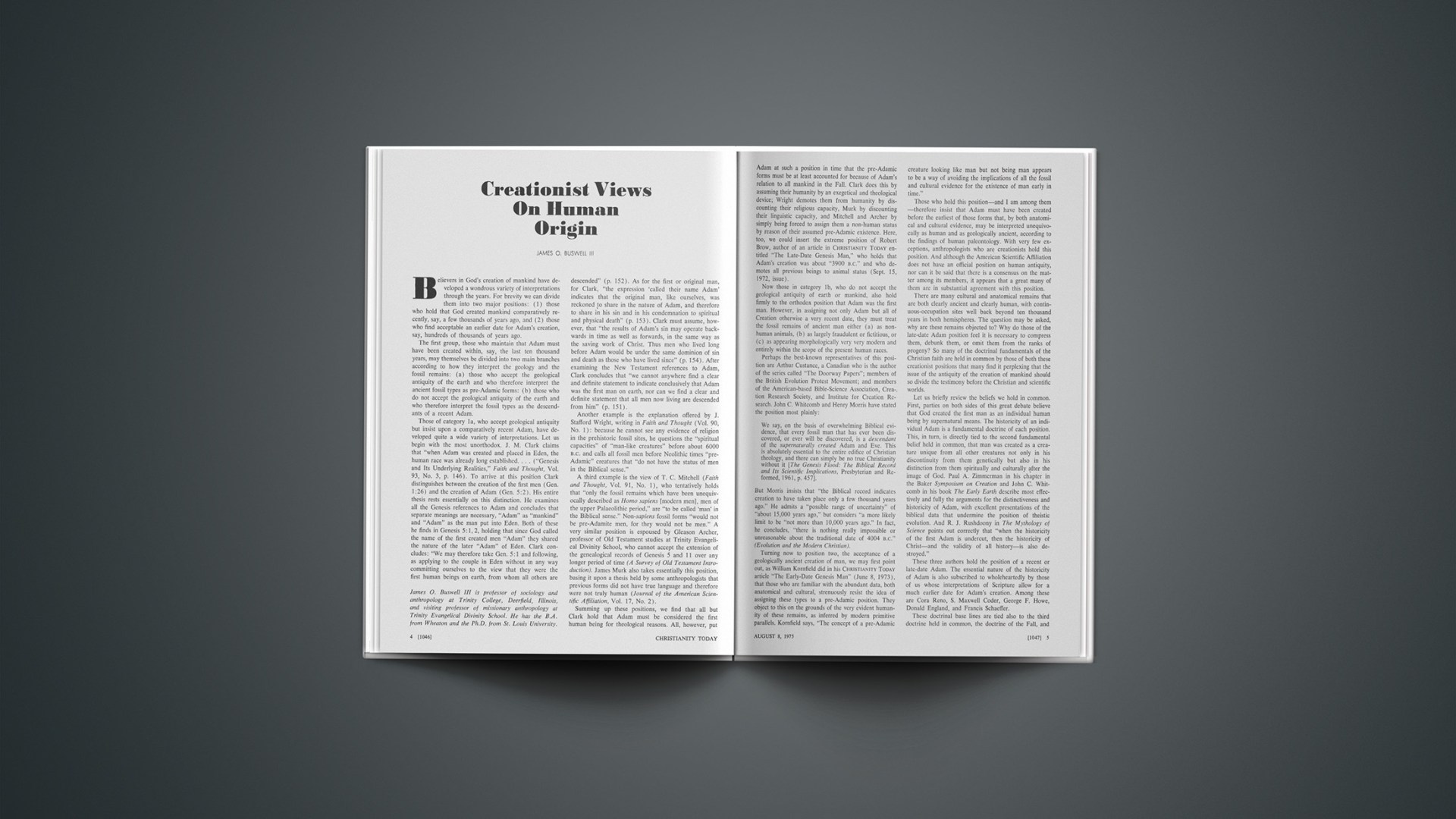Will the 2.8-million-member Lutheran Church-Missouri Synod (LCMS) be torn apart by schism?
Yes, say leaders of the so-called moderate side in the five-year-long battle in the LCMS over the doctrine of Scripture and how much doctrinal conformity the denomination can require of its churches and members. Actions taken at last month’s biennial convention in Anaheim, they claim, were a series of “eviction notices” that will force them out. These moves, they say, soon will lead to a direct confrontation between the conservative-led denomination and some of its districts and local churches. For the first time, they state, many members at the local level will become informed and take a stand. The result will be a new Lutheran denomination or transitional fellowship (pending merger with another Lutheran body) having an initial membership of 250,000 or so, says a moderate spokesman.
Conservative leaders, however, say they expect fewer than 100 congregations to bolt. And LCMS president Jacob “Jack” A. O. Preus implies he will do all he can to avert an explosive showdown with dissident district bodies.
The battle lines were drawn in 1969 when John H. Tietjen moved from a pan-Lutheran public relations job to the presidency of Concordia Seminary in St. Louis, then the world’s largest Lutheran seminary, and when Preus moved from the presidency of Concordia Seminary in Springfield, Illinois, to the presidency of LCMS. Preus, riding the wave of conservative concern over creeping theological liberalism in the LCMS, pledged that no synodical school would be permitted to teach that the Bible contains errors.
In 1970 Preus appointed a fact-finding committee to investigate teaching at Concordia, St. Louis, an action protested by moderates. The haggling continued through 1971. Conservatives failed at that year’s convention to land a majority on Concordia’s board of control.
In 1972 Preus issued “A Statement of Scriptural and Confessional Principles,” a set of theological guidelines upholding the inerrancy of Scripture. The majority of Concordia’s forty-plus teachers rejected it as a standard for judging their theological stance. They were supported by the board of control. Things heated up when instructor Arlis Ehlen, under criticism for allegedly teaching that some Old Testament events were not factual, was dismissed by the LCMS board for higher education. The American Association of Theological Schools placed Concordia on academic probation, citing outside interference in the school’s internal affairs. Preus released a report critical of the school, a report labeled in a public rebuttal by Tietjen as “unfair, untrue, sub-biblical, and un-Lutheran.”
In 1973 Concordia’s faculty majority issued a 200-page statement, asserting their faithfulness to the Word of God and the church. The LCMS Commission on Theology and Church Relations, headed by Ralph Bohlmann, found the statement unsatisfactory and asked the teachers to reject the liberal-oriented historical-critical method of biblical interpretation.
At the 1973 convention in New Orleans, Preus was reelected. Conservatives swept into power on virtually all commissions and boards, including Concordia’s. They also passed a series of resolutions that gave official status to Preus’s confessional statement, declared false doctrine was being taught at Concordia, and referred charges against Tietjen to the board of control.
In reaction, a group of moderates formed Evangelical Lutherans in Mission (ELIM) to lobby for change and to support dissidents.
After months of haggling, Tietjen was suspended as Concordia’s president in January, 1974. Most of the seminary’s students, faculty, and staff declared a moratorium on classes to protest the suspension. When the faculty and staff majority refused to go back to work they were fired. The student majority joined them to organize Concordia Seminary in Exile, nicknamed Seminex. Backed by ELIM and headquartered in borrowed space at a Jesuit school, Seminex students continued their education under their old teachers.
That spring the 100-plus Seminex graduates began seeking ordination and placement, most of them shunning special denominational procedures aimed at granting them official endorsement. Sympathetic district presidents accommodated them—against the wishes of Preus.
Meanwhile, a row broke out in the LCMS foreign missions division, mostly over policies and personalities rather than theology. The dispute disrupted overseas work, which was already affected adversely by the doctrinal conflict. Several staffers resigned, including executive secretary William H. Kohn. Kohn became head of Partners in Mission, the de facto mission wing of ELIM.
The Concordia board finally fired Tietjen officially in October, 1974, charging him with false doctrine and administrative shortcomings, among other things. Formal doctrinal charges were lodged against him by two pastors. In January he was elected president of Seminex (Bohlmann was elected president of Concordia in May). A few days before the Anaheim convention convened, the charges of false doctrine against Tietjen were dismissed by Oscar A. Gerken, Missouri district vice-president, who had been assigned to investigate. The pastors say they will appeal, meaning that the case eventually may land on Preus’s desk for a decision. In Anaheim, Preus said he wanted time to study the Gerken decision before commenting on it. Bohlmann insisted that Tietjen is guilty.
Preus, five LCMS vice-presidents, and the presidents of thirty-eight North American LCMS districts (plus two in South America) meet periodically as the Council of Presidents. For the most part, the district presidents seem to be pastoral types who simply want the boat-rocking in the Missouri Synod to stop. But over the past year the council itself has been the scene of conflict, mostly over Seminex.
In May the council adopted a resolution that in effect asked the upcoming convention to settle the issue of how to certify Seminex graduates for the LCMS ministry. (Some presidents were ordaining them outright; others were requiring them to complete the special program set up by Concordia.) The resolution ended with a pledge:
We solemnly assure the church that we shall abide by the decisions of the convention on these matters and that we shall perform our duties in accordance with our oath of office.
Eight presidents, however, declined to sign. They argued that congregations, in an issue of conscience, have the constitutional right to ordain a pastor even if the church at large rejects him. Seminex is a valid LCMS school, they implied, and its graduates are fit ministerial candidates. In their statement of dissent they blamed the key New Orleans resolutions for “a major role in the Synod’s problems.”
The eight: Herman R. Frincke, Eastern District; Harold L. Hecht, English; Paul E. Jacobs, California-Nevada; Emil G. Jaech, Northwest; Waldemar E. Meyer, Colorado; Herman F. Neunaber, Southern Illinois; Rudolph P. F. Ressmeyer, Atlantic; and Robert J. Riedel, New England. They represent a total of nearly 600,000 baptized members in 1,300 congregations.
To Preus, the stand of the eight presidents amounted to anarchy—and the continuation of Seminex. In his keynote presidential address at Anaheim he emphasized that Seminex, ELIM, and dissenting district presidents had to be dealt with in a “fair and loving” but “firm” way. No church body, he stated, can long support two theologies which are in conflict nor long endure such divisiveness as that caused by ELIM. As for the district presidents, said he:
The convention must finally decide who understands the constitution correctly. It must finally insist that those who serve as officers of the Synod, whether at the synodical or district level, give assurance to the Synod that they will carry out their duties in keeping with the Synod’s understanding of its constitution and bylaws.
At the Anaheim Convention Center were 1,120 voting delegates (560 pastoral, 560 lay), 500 advisory delegates, and a visitors’ gallery of 1,500. On crucial votes, the conservatives registered roughly a 60–40 majority, enabling Preus to get the anti-Seminex package he wanted. Amid prolonged and emotional debate, the delegates:
• Called on those associated with Seminex to close it; if not, it will be regarded as any other non-LCMS theological school.
• Confirmed that Seminex graduates must be properly certified to be eligible for the LCMS ministry and urged them to take corrective steps.
• Authorized action to make Seminex stop using “Concordia Seminary” as part of its name.
• Stipulated that Seminex professors can be retained on the LCMS clergy roster only as candidates on a renewable annual basis.
• Labeled the 14,000-member ELIM as schismatic and set up procedures to discipline those in it if it continues its schismatic ways (“support of a competing seminary [and] a competing mission program, its encouraging congregations to withhold financial support from the Synod and to call uncertified men as pastors”).
• Decided to merge Concordia Senior College of Ft. Wayne, Indiana, the main LCMS pre-ministerial school, with the LCMS junior college at Ann Arbor, Michigan, making that school a four-year institution; and to move Concordia Seminary, Springfield, to the Fort Wayne campus (the Fort Wayne college was a major source of Seminex support).
• Decreed by a 626–466 vote that a district president must ordain or authorize the ordination of properly certified candidates only and asked that he resign if he cannot uphold this constitutional requirement (if he does not resign and if he persists, he can be subjected to discipline that can lead to his office being declared vacant).
The action concerning the district presidents was wrought with emotion. Each of the eight was given time to state his position during pre-vote debate. “We are not anarchists,” declared Frinke, “We are deeply committed to the Lord Jesus Christ as well as to the Synod.” Loyalty to Scripture and the Lutheran Confessions sometimes must have precedence over church laws, suggested Ressmeyer.
Preus, his deep feelings showing, offered to forget the past and to sponsor a last-minute move to withdraw the measure if the eight presidents would promise to abide by policy in the future. “Will you walk with us?” he cried. There were a few catcalls, but these were drowned out almost immediately in a standing ovation for Preus. The eight principals sat stone-faced among their colleagues nearby.
An Eastern district delegate told the assembly that 5,000 had signed a petition instructing Frincke to refuse suspension or dismissal from office by any body other than the district. The petition also served notice that any action taken against Frincke is “an action taken against each of us,” and it implied that the district would ignore any order vacating Frincke’s office.
As the delegates stood to have their votes counted, the eight studied the crowd. “This is terrible,” muttered Hecht. “Some of my key men, my close personal friends, broke with me.” After the vote was announced, family members exchanged embraces with the eight and wept. Preus, also in tears, left the platform.
In a joint response on behalf of the others, Jaech said they would not “throw in the towel and leave” but would “continue our practice as presidents of our districts, unless our districts replace us.” In a press conference afterward, Riedel said he had no intention of leading any churches out of the Synod “unless action is taken against me.”
Preus hopes to avoid getting involved in any such action, even though a number of “illegal” ordinations are scheduled over the next weeks. (Neunaber would have been the first to defy the Synod’s ruling with an ordination on July 20 at Trinity Lutheran Church in Ana, Illinois. A controversy developed in the church over the issue, however, and the congregation postponed the event indefinitely.) Seminex is at the heart of the LCMS troubles, says Preus. If it can be persuaded—or forced—to close, the problem involving district presidents will be resolved, thus keeping defections at a minimum.
ELIM is scheduled to meet in Chicago this month to plan its response and strategy.
Other actions at Anaheim:
• In a surprise vote, the delegates voted against dismantling the non-geographic English district (a bastion of ELIM backers).
• All but one of the 131 candidates endorsed by the conservative publication Affirm were elected, leading to protests by moderates. (The loser was conservative Waldo J. Werning, missions board chairman; many felt he was partly to blame for the overseas problems.)



